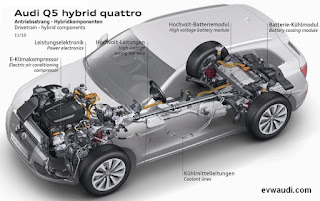AUTOCARE WITH DAMILARE: Hybrid Electric Vehicles (HEV)
Hybrid Electric Vehicles (HEV)
This is partly, internal combustion and partly electric motor or electric power train (which helps transfer torque to the driving wheels for hybrid vehicles). ie. Combination of both. They can be designed to meet different goals, such as better fuel economy or more power.
Hybrids have the ability to generate electric current, store it in a large battery, and use that current to help drive the car. Hybrids capture electrical energy produced by a regenerative braking system, and their engines can power a generator, too. Hybrids can also conserve energy by shutting down the ICE when the vehicle is in Park, idling at a night, or stopped in traffic, or when the electric motor’s energy is sufficient to drive the vehicle without assistance from the ICE.
Types of HEV
Parallel hybrids
A parallel hybrid uses both an electric motor and an ICE for propelling force. They can run in tandem, or one can be used as the primary power source with the other kicking in to assist when extra power is needed for starting off, climbing hills, and accelerating to pass other vehicles. Because both are connected to the drive train, they’re said to run “in parallel."
Series hybrids
A series hybrid uses a gasoline or diesel ICE, coupled with a generator, to generate electricity but not to drive the car. The engine can send the electric current directly to the electric motor or charge a large battery that stores the electricity and delivers it to an electric motor on-demand. The electric motor propels the vehicle, using its power to rotate a driveshaft or a set of drive axles that turn the wheels.
Plug-in hybrids
Because plug-in hybrids feature larger batteries that can be charged at any ordinary 110-volt electrical socket, they have the capacity to extend the ability of the electric motor to drive the car farther without the need for starting the ICE and therefore substantially increase the vehicle’s fuel efficiency. Estimates have ranged as high as 100 mpg!
The development of new, smaller, high-capacity lithium-ion batteries that can be recharged many times is the key to making plug-in hybrids available to the general public. Estimates are that plug-in hybrids equipped with these more powerful batteries will have a range of as much as 125 miles before the charge is depleted and the vehicle reverts to standard hybrid mode.
Most hybrids use several advanced technologies:
Regenerative Braking. Regenerative braking recaptures energy normally lost during coasting or braking. It uses the forward motion of the wheels to turn the motor. This generates electricity and helps slow the vehicle.
Electric Motor Drive/Assist. The electric motor provides power to assist the engine in accelerating, passing, or hill climbing. This allows a smaller, more-efficient engine to be used. In some hybrids, the electric motor alone propels the vehicle at low speeds, where gasoline engine are least efficient.
Automatic Start/Stop. Automatically shuts off the engine when the vehicle comes to a stop and restarts it when the accelerator is pressed. This reduces wasted energy from idling.
Post by: Oriyomi Oluwadamilare Dolapo
Facebook: Oriyomi Oluwadamilare Dolapo
Instagram: oo_oluwadamilare
Twitter: oo_damilare





Comments
Post a Comment